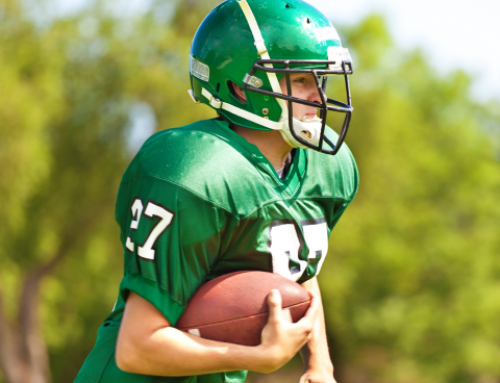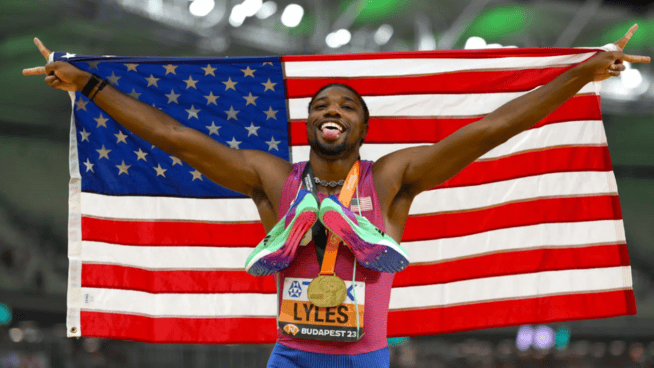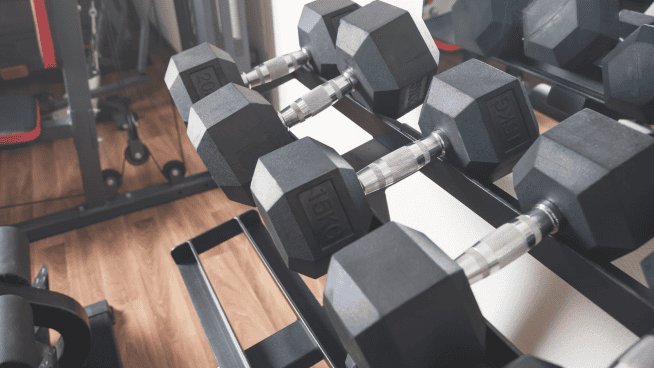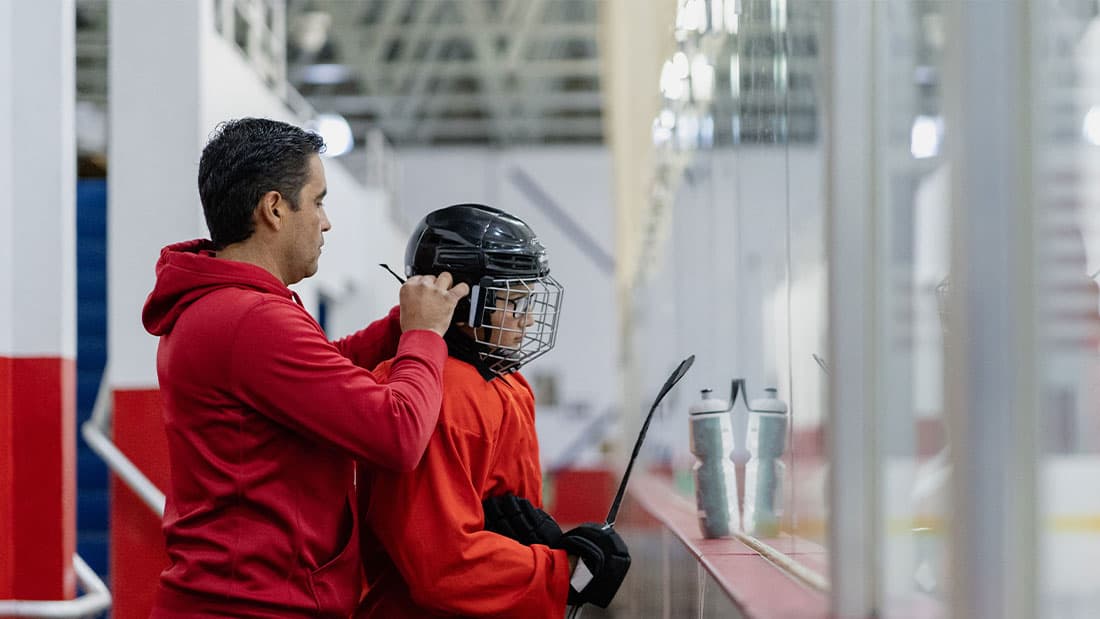ACL Surgery Recovery: A Timeline
Tearing the anterior cruciate ligament inside the knee joint is a fairly common sports injury. It typically occurs in non-contact situations when a player twists, plants or changes direction awkwardly. In football, however, it often happens with contact.
Although ACL tears don’t necessarily end careers like they once did, surgery and recovery can sideline an athlete for months. Minnesota Vikings running back Adrian Peterson, for example, was out of the game for less than a year—and his was considered a speedy recovery.
ACL surgery recovery times vary widely, and misconceptions are rife about how long it takes to get back on the field. Let’s take a closer look at what needs to happens, in rough chronological order, before an athlete can return to form.
ACL Surgery Recovery
One to Two Weeks After Surgery
Control of pain and swelling. Swelling causes pain, stiffens joints and decreases muscle contractile force. Light movement, elevation, compression and ice help control it initially.
Healing of soft tissue. The incisions on the outside of the skin need to heal before you can increase your range of motion or start doing therapy in a pool (which is good for swelling as well as movement). You also risk infection with an unhealed incision.
Mobility of soft tissue and scar. Stiffness of the superficial skin, the joint capsule, patella (kneecap), scar and muscles can limit motion. Therapy may include massage to ease the stiffness.
Full knee extension. By week two after surgery, you should be able to straighten your leg. If you cannot, talk with your doctor or trainer, because it might stall your recovery.
Full weight bearing. The time it takes to be able to bear full weight on the knee varies, but generally you will wear a straight leg brace for support for some time.
Quadriceps activity. Quadricep muscles can be deactivated by the surgery. Restoring the ability to use your quadriceps is important to your recovery.
Getting off crutches. With an isolated tear, this generally happens after a week or two.
Driving a car. Generally, one week for left leg surgery if you drive an automatic; two to four weeks for manual transmission cars or after a right leg surgery.
One to Two Months
Climbing stairs. This will take about a month.
Progressive knee flexion. In the long run, the ability to bend the knee is as important as straightening it. But knee-bending occurs later in the process.
Normal walking patterns. You should be able to walk without crutches four to six weeks after surgery.
Protection of the graft. It takes four to six weeks for graft fixation—for the ends of the ACL that were screwed into the femur and tibia to become fixed to the bones at either end (the screws will eventually dissolve). Then the new ACL, which is usually made of a tendon or muscle, but which can come from a cadaver, must be revascularized (a fancy word for regaining blood flow to the tissue). This occurs because the ACL has several mechanisms within it that make it work, including proprioceptors (which assist with balance), hormone receptors (one of the reasons it is believed to be a common injury in females), and blood vessels.
Controlling knee valgus. Knee valgus is what causes stress to the ACL. It is the point during squatting, jumping, landing or cutting when a knee or both knees bend in toward the middle (inside the hips). This mechanically stresses the ACL and puts the hamstrings at a disadvantage to protect it. Exercises like X-Band Walks, Sumo Deadlifts and Wide-Based Squats help control knee position to prevent this.
More Than Two Months
Jogging. You can jog in the water after about two months; on land, about three months. This depends on factors related to range of motion, swelling, pain and soft tissue quality.
Sprinting. You must be able to run without a limp. You must have adequate single-leg strength on the repaired side in order to sprint. All athletes will wear a functional ACL brace when sprinting, which may not happen until six or even nine months after surgery.
All functional movement patterns. Cutting is under control at about four months. With plyometrics, you progress from jumping rope at three to six months to full single-limb activities within six to nine months. Partial Resisted Squats with good ankle mobility, knee valgus control and increasing resistance may begin at six weeks; but younger or weaker athletes might have to wait until later in the process, as late as 10 weeks for some. Full lunge with good core control should be achieved by 10 weeks with gradual progression of resistance. Partial lunges can begin earlier. High speed deceleration—one of the most challenging activities for an athlete after knee surgery—can take four to six months. It requires strength, stability, core control, adequate proprioception and understanding of the mechanics.
A Year or More
Full quadriceps strength. Full strength in your quads may not actually be present nine or even 12 months after surgery. To return to sports, you should have regained 90 percent of your strength on the opposite side. Quadriceps strength has long been the determining factor physicians use to determine “readiness” to play. This was a simple strength measure. The quadriceps are significant to the knee because they propel walking, stair climbing, running, jumping and kicking. However, the quadriceps can overly stress the ACL, which is why full range-of-motion exercises are not performed until after eight to 10 weeks.
Hamstring strength. The hamstring muscle group is an “antagonist” to the quadriceps—i.e., it works in opposition to or in concert with but with a different action, to protect the ACL. Hamstrings should be firing during jumps, landings and cuts to protect the knee during these activities.
Balance. Good balance is a key component to return. Enough said.
Back Squat and single-leg strength. One theory holds that heavy back squatting is all that’s necessary to restore full strength in a single leg. This is not completely accurate. It takes a resolute focus on the single leg to even prepare an athlete to resume a good grooved squat pattern. However, Back Squat strength and Deadlift strength are imperative before an athlete can return. The Deadlift restores hamstring strength and the Back Squat restores the ability to absorb ground reaction forces.
The ability to regain strength after an ACL injury is the single biggest element in determining return. It’s also the most painstaking part of the process, because it takes time and patience. The stronger you are when you suffer the injury, the easier it is to return to form.
Read more:
[cf]skyword_tracking_tag[/cf]RECOMMENDED FOR YOU
MOST POPULAR
ACL Surgery Recovery: A Timeline
Tearing the anterior cruciate ligament inside the knee joint is a fairly common sports injury. It typically occurs in non-contact situations when a player twists, plants or changes direction awkwardly. In football, however, it often happens with contact.
Although ACL tears don’t necessarily end careers like they once did, surgery and recovery can sideline an athlete for months. Minnesota Vikings running back Adrian Peterson, for example, was out of the game for less than a year—and his was considered a speedy recovery.
ACL surgery recovery times vary widely, and misconceptions are rife about how long it takes to get back on the field. Let’s take a closer look at what needs to happens, in rough chronological order, before an athlete can return to form.
ACL Surgery Recovery
One to Two Weeks After Surgery
Control of pain and swelling. Swelling causes pain, stiffens joints and decreases muscle contractile force. Light movement, elevation, compression and ice help control it initially.
Healing of soft tissue. The incisions on the outside of the skin need to heal before you can increase your range of motion or start doing therapy in a pool (which is good for swelling as well as movement). You also risk infection with an unhealed incision.
Mobility of soft tissue and scar. Stiffness of the superficial skin, the joint capsule, patella (kneecap), scar and muscles can limit motion. Therapy may include massage to ease the stiffness.
Full knee extension. By week two after surgery, you should be able to straighten your leg. If you cannot, talk with your doctor or trainer, because it might stall your recovery.
Full weight bearing. The time it takes to be able to bear full weight on the knee varies, but generally you will wear a straight leg brace for support for some time.
Quadriceps activity. Quadricep muscles can be deactivated by the surgery. Restoring the ability to use your quadriceps is important to your recovery.
Getting off crutches. With an isolated tear, this generally happens after a week or two.
Driving a car. Generally, one week for left leg surgery if you drive an automatic; two to four weeks for manual transmission cars or after a right leg surgery.
One to Two Months
Climbing stairs. This will take about a month.
Progressive knee flexion. In the long run, the ability to bend the knee is as important as straightening it. But knee-bending occurs later in the process.
Normal walking patterns. You should be able to walk without crutches four to six weeks after surgery.
Protection of the graft. It takes four to six weeks for graft fixation—for the ends of the ACL that were screwed into the femur and tibia to become fixed to the bones at either end (the screws will eventually dissolve). Then the new ACL, which is usually made of a tendon or muscle, but which can come from a cadaver, must be revascularized (a fancy word for regaining blood flow to the tissue). This occurs because the ACL has several mechanisms within it that make it work, including proprioceptors (which assist with balance), hormone receptors (one of the reasons it is believed to be a common injury in females), and blood vessels.
Controlling knee valgus. Knee valgus is what causes stress to the ACL. It is the point during squatting, jumping, landing or cutting when a knee or both knees bend in toward the middle (inside the hips). This mechanically stresses the ACL and puts the hamstrings at a disadvantage to protect it. Exercises like X-Band Walks, Sumo Deadlifts and Wide-Based Squats help control knee position to prevent this.
More Than Two Months
Jogging. You can jog in the water after about two months; on land, about three months. This depends on factors related to range of motion, swelling, pain and soft tissue quality.
Sprinting. You must be able to run without a limp. You must have adequate single-leg strength on the repaired side in order to sprint. All athletes will wear a functional ACL brace when sprinting, which may not happen until six or even nine months after surgery.
All functional movement patterns. Cutting is under control at about four months. With plyometrics, you progress from jumping rope at three to six months to full single-limb activities within six to nine months. Partial Resisted Squats with good ankle mobility, knee valgus control and increasing resistance may begin at six weeks; but younger or weaker athletes might have to wait until later in the process, as late as 10 weeks for some. Full lunge with good core control should be achieved by 10 weeks with gradual progression of resistance. Partial lunges can begin earlier. High speed deceleration—one of the most challenging activities for an athlete after knee surgery—can take four to six months. It requires strength, stability, core control, adequate proprioception and understanding of the mechanics.
A Year or More
Full quadriceps strength. Full strength in your quads may not actually be present nine or even 12 months after surgery. To return to sports, you should have regained 90 percent of your strength on the opposite side. Quadriceps strength has long been the determining factor physicians use to determine “readiness” to play. This was a simple strength measure. The quadriceps are significant to the knee because they propel walking, stair climbing, running, jumping and kicking. However, the quadriceps can overly stress the ACL, which is why full range-of-motion exercises are not performed until after eight to 10 weeks.
Hamstring strength. The hamstring muscle group is an “antagonist” to the quadriceps—i.e., it works in opposition to or in concert with but with a different action, to protect the ACL. Hamstrings should be firing during jumps, landings and cuts to protect the knee during these activities.
Balance. Good balance is a key component to return. Enough said.
Back Squat and single-leg strength. One theory holds that heavy back squatting is all that’s necessary to restore full strength in a single leg. This is not completely accurate. It takes a resolute focus on the single leg to even prepare an athlete to resume a good grooved squat pattern. However, Back Squat strength and Deadlift strength are imperative before an athlete can return. The Deadlift restores hamstring strength and the Back Squat restores the ability to absorb ground reaction forces.
The ability to regain strength after an ACL injury is the single biggest element in determining return. It’s also the most painstaking part of the process, because it takes time and patience. The stronger you are when you suffer the injury, the easier it is to return to form.
Read more:
[cf]skyword_tracking_tag[/cf]











